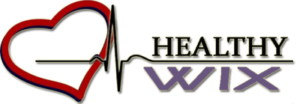
Teeth enamel and bone are the hardest minerals in the human body. While most individuals understand the need of taking care of their teeth, few give their bones’ health any thought unless there is a problem. In addition to providing your body with the strength, balance, and support it needs, strong bones allow you to stand up straighter, which may improve your appearance and give you a more confident, youthful demeanour. As per the experts doing ABA therapy in Port St. Lucie, taking proactive steps to care for your bones can contribute to a healthier, more active lifestyle and reduce the risk of bone-related issues later in life.
Lifestyle
Bones act as armour for vital organs and as a structural foundation for your muscles. Your bone health determines how actively you can engage in social activities like dancing and physical hobbies like golf and tennis. Having strong bones helps you get through the day even if your body is exhausted after a long week of labour. With Thrive patch usage you can have the best lifestyle boost ever.
Risk of Osteoporosis
Having healthy, robust bones may help stave against osteoporosis. A University of New Mexico exercise scientist says that beyond age 35, both men and women lose bone density at a rate of around one percent each year. Bone loss in women often reaches its peak between the third and fifth year after menopause. Osteoporosis, a disease that makes bones more porous and weak, may affect both men and women who have had considerable bone density loss. Osteoporosis increases the risk of fractures in vulnerable bone locations such the hip, spine, and wrist.
Athletic and Physical Prowess
The physical and mental well-being of an athlete are both crucial to their performance. Bone mass may be increased with consistent exercise begun before the normal commencement of bone loss between the ages of 25 and 30. Bone density and strength may be improved by regular exercise at any age, even after the start of bone loss has occurred. High-impact weight-bearing sports, such as jogging, running, stair climbing, tennis, and dancing, are essential for bone development and maintenance. The National Osteoporosis Foundation suggests that those who can’t do high-impact workouts should try low-impact weight-bearing activities instead. Aerobics, stair steppers, elliptical trainers, and walking are all examples of such activities. If you have osteoporosis or another condition that might be exacerbated by exercise, you should see your doctor for advice on safe and effective ways to stay active.
Nutritional Support for Strong Bones
Bone health depends on a steady supply of calcium, and vitamin D is required for calcium absorption from meals. The best source of calcium and vitamin D is the food you eat. Common sources of calcium include milk, yoghurt (415 milligrammes of calcium per 8 ounce serving), and orange juice (500 milligrammes). (305 milligrams per cup). Sockeye salmon (140 international units), orange juice (136 international units), and milk (116 international units) are other good sources of vitamin D. (792 international units for 3 ounces). Calcium and vitamin D supplements may be helpful, but it’s important to check in with your doctor before starting any regimen.
Typical Recommended Nutrient Intakes
The 2010 Dietary Guidelines for Americans recommend that teenagers get 1,300 milligrammes of calcium per day, adults between the ages of 19 and 50 consume 1,000 milligrammes per day, and those 51 and above consume 1,200 milligrammes per day. For those under the age of 9, the RDA for vitamin D is 400 international units, for those between the ages of 9 and 70, it’s 600 IU, and for those beyond the age of 70, it’s 800 IU.
